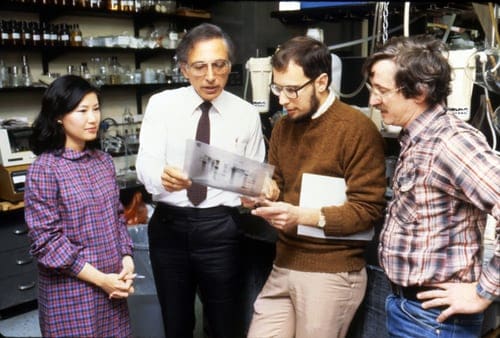
Art can be defined as an expression or application of creative skill or imagination towards innovation. We will discuss how to Become a Postdoctoral Research Associate in this article. Since birth, human beings strive to learn, develop, and skill themselves with several art forms to contribute to society. Science is the art form of knowledge gathering and organization to explain/make predictions on all phenomenons in the universe. Science is learned from an early age from interest and skilled in detailed information assessment/processing of data during higher educations. We will discuss how to Become a Postdoctoral Research Associate in this article.
How to Become a Postdoctoral Research Associate?
A Post-doctorate(postdoc) is the highest scientific education platform to learn, explore and lead the scientific investigation. A typical postdoc involves applying knowledge and experience gathered during your earlier studies in leading a project with clear directives and Workplan with minimal supervision from an established professor or free-standing. This means first coming with ideas for a project, writing grants, establishing work plans, executing and troubleshooting, and compiling results and publications. The first step is to establish a project that involves providing background of the work, compiling what has been done till now and what you are seeking to do with the clear justification of your hypothesis detailing the techniques applied. After you have established a project with a good justification of the objectives, you will write a grant seeking funds for resources and personnel(student interns, Dissertation students) to achieve the tasks to different agencies who match your project themes. Based on the grant money, you will advertise your project on specific platforms and hire the appropriate help(students) showing interest in the work, whom you will teach, further and lead to reach your project goals. There is no fool-proof science; science is the art of information gathering, analysis, and troubleshooting. The biggest learning experience during a postdoctorate is the tact to troubleshoot your projects. The next aspect of a postgraduate is leading, further, and grooming the next generation. A doctoral student hired by you is expected to produce results and defend his thesis. This balance between the justification of acquired funds with results and supervising your students’ career makes postdoctorate the most challenging and exciting learning platform.
There are other postdoctoral associate positions: working as a postdoc under an established professor’s mentorship or an industrial postdoctoral position. An established professor will recruit seasoned candidates looking to expand their skill set to collaborate and write a joint project lead by the postdoctoral candidate with some professor’s supervision when necessary. This type of postdoctoral project provides an opportunity to diversify. Science is an ever-evolving field. The hypothesis is made and broken with new evidence every day driven by technological advancement. Modern technology has helped gather more evidence/data, which can provide new information so, candidates are expected to keep up to date with modern techniques. Case in point, Electron microscopy was defined as the pinnacle of modern technology to study the smallest molecules of life, but, now with a cryo-fixing ability to freeze samples, cryo-electron microscopy has pushed the limits of what can be observed and, in turn, providing more details of older information. In this field, a seasoned professor can help a postdoctoral candidate establish a foothold to learn, reskill, and eventually adorn their expertise in driving the research further.
An industrial postdoc is similar to an academic postdoctorate in many ways, with the biggest difference seen in the funding and the project objectives. An industrial postdoctorate project is advertized by industries seeking experienced professionals to lead their ideas. The company establishes what they want to study, either relating to new technology or researching their own product. They provide the funding/resources and personnel(either by recruitment or establishing a university collaboration to recruit students). The postdoctoral candidate is expected to lead the project, establish the methodology, tailor the established ideas and present the results. The advantage of this type of study is the availability of greater resources and trained personnel. It may limit the possibility of growth of the candidate as they don’t explore the fundaments but rather perform application-based research.
What’s the Requirement?
The minimum requirement for a postdoc is a strong fundamental knowledge in the field and the ability to analyze and break scientific data critically. Usually, a post-doctorate associate position is offered to experienced doctoral candidates. It is mandatory to possess a bachelor’s and master’s degree in a field similar to the proposed project. By definition, one cannot hold a postdoc position without a doctoral degree. A doctorate is essential to train a candidate to perform and analyze a project independently. A Ph.D. candidate handles a part of the project objectives during their journey, performs experiments to the quantity, justifies their results, and defends their work in front of their peers. This journey instills critical thinking abilities onto the student and builds up their fundamentals in the process.
These different paths of postdoctoral associate positions define the scientific approach, mentality and path of a researcher.
Also read How to become a nurse researcher.
